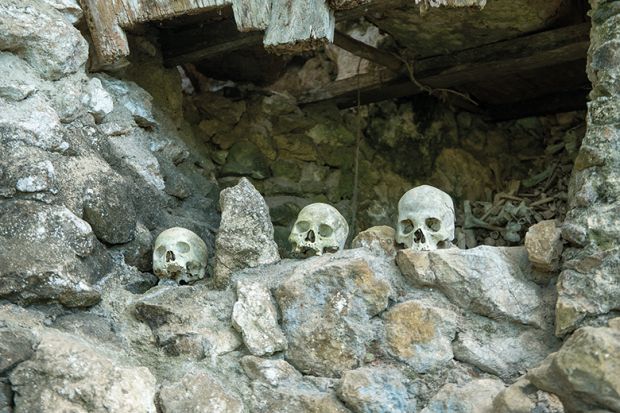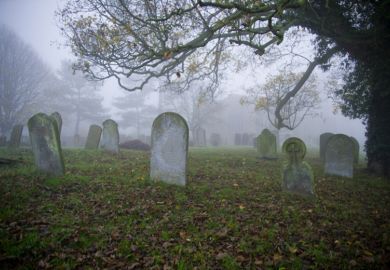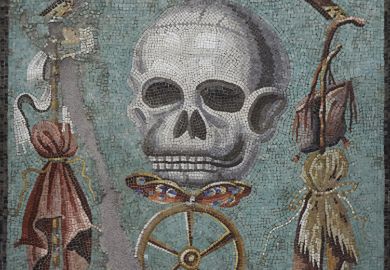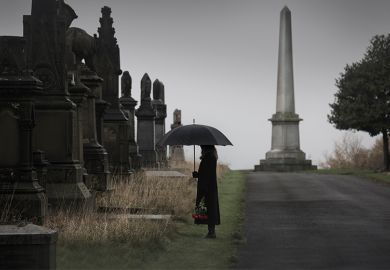Death is the only certainty in life, and the ways in which we take leave of our dead say much about us. Perceptive church crawlers will be aware of great riches to be found that celebrate the dead: from exquisite little chantry chapels, tomb chests with effigies and great Baroque pile-ups of theatrical excess to mural tablets (like visiting cards, plastering the walls of places such as Bath Abbey), funerary monuments and memorials offer a great deal to delight, intrigue, amuse, repel and much else.
In the past 12 months, I have attended many funerals (being of a Certain Age), most of which have appalled by their lack of meaning and their suburban emptiness. One, however, was magnificent, in a splendid medieval church, with orchestra, chorus and four soloists singing the Requiem in Mozart’s setting; a good old pea-souper of incense; everything in Latin (apart from the homily and the eulogy); the congregation all properly attired (as were the educated clergy, with lace tumbling everywhere, wearing fetching birettas, and speaking clearly and properly); and everything done with dignity and solemnity.
The others were dreadful, enacted in characterless spaces having no more resonance than can be found in an NHS waiting room, with “clerics” devoid of any charisma or anything else presiding over an empty, embarrassing act of disposal in a municipal incinerator, and “mourners” shuffling in emotional discomfort, clearly disengaged and bewildered, especially when the act of “committal” is not a committal at all, but a mere disappearing act, a kind of macabre coitus interruptus for the emotionally underdeveloped. If a committal to a grave is acceptable, why not watch the coffin going into the furnace? It could be tastefully done. At the moment, there is a sense of anticlimax, and wondering what has happened. There is no finality, no leave-taking.
This, surely, is part of the infantilisation of modern life, when we are shielded from everything, and even mass murder is reduced to “entertainment”. In any case, what on earth are we doing, wasting huge amounts of energy incinerating corpses and polluting the atmosphere when there are far more ecologically sound ways of disposing of the dead? We even refer to ground-up fragments of calcined bones as “ashes”, when they are nothing of the sort.
Helen Frisby’s little canter through attitudes to death, dying and disposal of the dead over many centuries, mainly in England, is decently argued and illustrated, providing a useful introduction to the subject. She describes the cultural upheaval that sundered the living from the dead in the 16th century, when the entire apparatus of prayers for the dead, chantries and intercessions was jettisoned. The damage was immense, and the effect on society is difficult to imagine, but, going hand in hand with the dissolution of the great and small religious houses, the stripping of the altars, the obliteration of wall paintings, the tearing down and throwing out of screens, images and a great deal more, the destruction of church furnishings, religious observance and belief, and indeed the very heart of culture itself, that huge Taliban-like revolution impoverished us all, leaving only empty husks of half-remembered belief and a void that is probably irreversible.
Let us hope Frisby will expand her work and create a magisterial study of the whole fascinating subject. She is capable of doing just that.
James Stevens Curl’s Making Dystopia: The Strange Rise and Survival of Architectural Barbarism was published last year. He recently received an Arthur Ross Award for Excellence in the Classical Tradition for History & Writing from the Institute of Classical Architecture & Art in the US.
Traditions of Death and Burial
By Helen Frisby
Shire Publications
96pp, £9.99
ISBN 9781784423773
Published 19 September 2019
Register to continue
Why register?
- Registration is free and only takes a moment
- Once registered, you can read 3 articles a month
- Sign up for our newsletter
Subscribe
Or subscribe for unlimited access to:
- Unlimited access to news, views, insights & reviews
- Digital editions
- Digital access to THE’s university and college rankings analysis
Already registered or a current subscriber?








